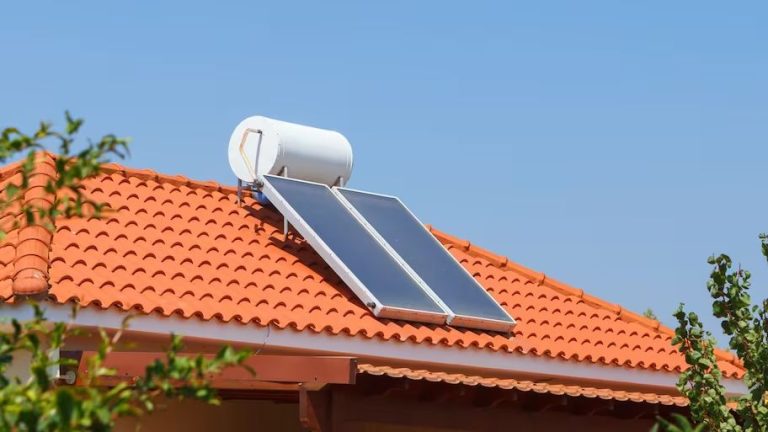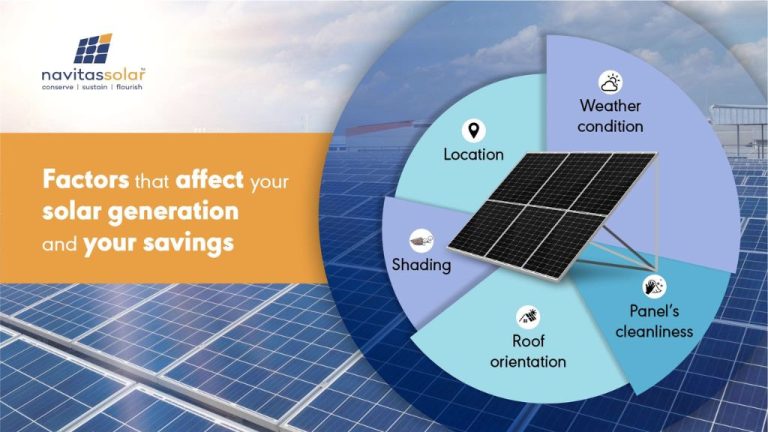Is Solar Really The Future?

Despite being around for more than half a century, solar power has seen an explosion in interest and adoption over the last decade. Solar accounted for 150 gigawatts of new power capacity added during 2021, the largest annual increase of any energy source in history according to the International Energy Agency (IEA). Today, questions abound regarding how significant a role solar will play in the global energy landscape moving forward.
With climate change driving the transition away from fossil fuels, renewable energy sources like solar and wind are viewed as critical in reducing greenhouse gas emissions. As costs have come down dramatically in recent years, solar has become the lowest cost option for new power generation in many parts of the world.
So is solar destined to dominate electricity generation in the decades ahead? In this article, we dive deep into the current state of solar and explore whether it truly represents the energy source of the future.
Brief History of Solar
The first modern silicon solar cell was invented in 1954 at Bell Labs. This launched the beginning of solar photovoltaic technology as we know it today. For the next few decades, solar remained very expensive, limiting adoption mostly to space satellites and specialty uses.
Major innovations in manufacturing and materials science drove down costs significantly starting in the 1990s. For example, switching from expensive polysilicon wafers to multicrystalline silicon, and new techniques for making thinner silicon wafers reduced module costs by 85% over the past decade. Innovations like thin film solar have further reduced raw material costs.
Over the decades, efficiency has steadily improved from around 6% in the 1950s to over 20% today for leading lab modules. In tandem with cost reductions, this has dramatically increased affordability and adoption of solar PV. Costs have dropped 99% since the late 1970s, allowing solar to now compete head-to-head with fossil fuels in most of the world.
Current Costs and Trends
The costs of solar panels and systems have fallen dramatically over the past decade. According to the Solar Energy Industries Association (SEIA), the average price of solar panels has dropped by over 70% since 2010 (SEIA). This dramatic price decrease has made solar power much more affordable and accessible for homeowners and businesses.
In addition to falling equipment prices, the “soft costs” of solar installation, like permitting, financing, and labor, are also dropping. Total installed system prices fell by over 40% between 2010 and 2021 (SEIA). This has helped spur rapid growth in solar adoption.
The United States solar market is expanding at a breakneck pace. The SEIA reports that the U.S. installed 23.6 gigawatts (GW) of solar capacity in 2021, up 46% over 2020 (SEIA). Total installed capacity is forecast to triple over the next 5 years. Falling prices and strong policy support are driving record growth rates for both residential and utility-scale solar installations.
Solar Energy Potential
Solar energy has enormous potential to meet global energy demand. The theoretical potential of solar is far greater than the world’s energy requirements. According to one study, the total solar energy absorbed by Earth’s atmosphere, oceans and land masses is approximately 3,850,000 exajoules (EJ) per year (Final Report, 2010). In comparison, the total global energy consumption in 2019 was estimated to be 600 EJ (IEA, 2021). This suggests the planet receives more than 6,000 times more energy from the sun than humans currently use.
Solar also has potential competitive advantages over other renewable energy sources. Unlike wind or hydro power, solar energy can be harvested in some capacity anywhere sunlight reaches Earth. Additionally, both photovoltaic and concentrated solar facilities require less land area than other renewables. One analysis found that solar PV uses 1/10th the land of biomass production and 1/25th the land of wind energy per unit of energy produced (Final Report, 2010).
With continued innovation and cost reductions, solar has the potential to become one of the world’s primary electricity sources. However, fully tapping into solar’s immense potential will require overcoming lingering challenges and limitations.
Challenges and Limitations
One of the biggest challenges with solar power is its intermittency. Solar energy is only available when the sun is shining, and can vary throughout the day and seasonally. This intermittency makes it difficult to integrate large amounts of solar into the electric grid and maintain a consistent power supply (Renewable Energy Intermittency Explained: Challenges, Solutions and Opportunities).
Solar intermittency requires storage solutions to capture excess solar generation during peak hours for use at night or during cloudy weather. Currently, utility-scale batteries are still limited in capacity and geographic constraints exist for other large-scale storage like pumped hydroelectric (The Limitations of Solar: Intermittency, Reliability and Capacity).
Solar farms also require significant amounts of physical space due to the diffuse nature of solar radiation. One estimate suggests that to meet 100% of electricity demand, solar panels would need to cover roughly 1% of the total land area in the contiguous United States (Impacts of solar intermittency on future photovoltaic reliability). Land constraints could become an issue in densely populated areas.
Solutions and Innovations
Advances in battery storage technology are making solar energy more viable and practical. Lithium-ion batteries have improved dramatically in recent years, with costs dropping 80% between 2010-2019 (Solar Energy Storage Benefits (And Disadvantages)). New battery chemistries like vanadium flow batteries offer long lifespan and no degradation over time. Battery storage allows excess solar energy to be captured and used when needed, enabling 24/7 renewable power.
Smart grids and distributed solar generation are also key innovations. Smart grids use advanced metering, sensors and software to dynamically balance electricity supply and demand. This enables greater grid flexibility and stability as more intermittent solar power comes online. Distributed solar spreads solar generation across rooftops and properties, reducing strain on grids and making outages less likely (Solar Integration: Solar Energy and Storage Basics).
Solar forecasting has also improved dramatically, using machine learning to predict solar output hours or days in advance. This lets grids schedule other generators effectively. More accurate forecasts prevent over-generation and frequency fluctuations when solar output changes.
Government Policy
Governments play a major role in driving solar adoption through incentives, subsidies, and regulations. Many governments have introduced generous subsidies and tax breaks to lower the upfront costs of going solar. For example, the U.S. federal government offers a 26% tax credit for installing solar panels (https://www.solarchoice.net.au/blog/solar-power-in-the-united-states-state-of-play/). Some states like California offer additional rebates on top of the federal credit. These financial incentives make it more affordable for homeowners and businesses to adopt solar.
Governments also implement renewable portfolio standards which require utilities to source a percentage of their electricity from renewable sources. These standards create demand for solar power and spur its growth. However, burdensome permitting processes and unfavorable net metering policies in some regions can hinder distributed solar adoption. Streamlining solar regulations and implementing supportive policies will be key to accelerating its deployment (https://www.solarchoice.net.au/blog/solar-power-discount-performance-based-pv-recs/). Overall, government policy plays a pivotal role in shaping solar incentives and removing roadblocks to its widespread adoption.
Business Adoption
Major companies are increasingly investing in solar energy to power their operations. According to a report from the Solar Energy Industries Association, corporate solar adoption soared by 40% in 2021 to 14.5 gigawatts. The top corporate solar adopters were Meta, Amazon, Apple, Walmart, and Microsoft.
A key driver of solar adoption by businesses is significant cost savings. Installing solar panels allows companies to reduce their electricity bills and lock in lower long-term energy costs. For example, Target has stated that transitioning to renewable energy could save the company up to $20 million annually. Major tech companies like Apple, Amazon, and Google have pledged to power their operations with 100% renewable energy, citing both sustainability goals and cost savings as motivations.
The declining costs of solar technology, favorable government policies, and increasing competitiveness with conventional energy sources are expected to continue driving rapid growth in commercial solar adoption.
Residential Adoption
Home solar installation has seen rapid growth in recent years as costs have declined and more homeowners want to go green and become energy independent. According to Solar Builder Mag, while strong net metering policies remain important, future residential solar growth will require innovations to further reduce costs and improve technologies (https://solarbuildermag.com/news/residential-solar-market-growth-driven-by-diverse-mix-of-national-regional-installers-in-2018/).
However, barriers still exist to wider adoption of residential solar. High upfront costs can deter homeowners, even though lifetime costs may be cheaper than utility power. Not every home is suitable for solar installation due to roof orientation, shading, or structural issues. There are still some limitations with net metering policies in certain areas. And the aesthetics of solar panels may not appeal to some homeowners. According to research by Uz, the willingness to pay for solar attributes varies by factors like income, education, environmental awareness and more (https://www.sciencedirect.com/science/article/abs/pii/S0140988323007752). Overcoming these barriers will be key to increase residential solar adoption.
Conclusion
As we’ve seen, solar energy has enormous potential to become a major energy source in the future. Costs have declined rapidly, and solar technology continues to improve through ongoing R&D and economies of scale. Projections show solar could provide up to 45% of US electricity by 2050.
With further cost reductions, technology advances, and supportive government policies, the outlook is bright for solar to become the dominant energy source globally. Solar offers a clean, renewable alternative to fossil fuels that can help address climate change. While challenges remain, the innovations underway make solar’s future as our primary energy source very achievable.






